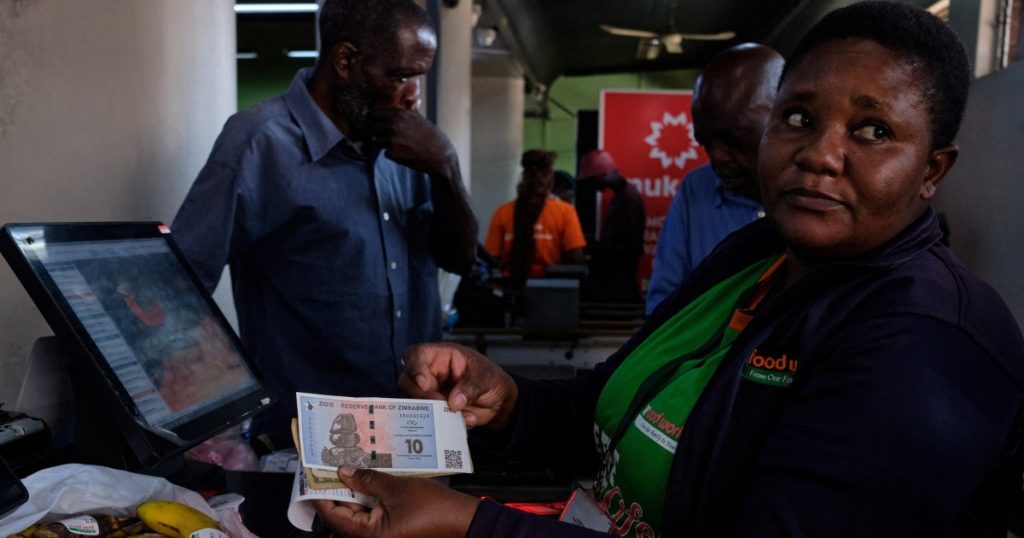The ongoing currency crisis in Zimbabwe has been exacerbated by the recent devaluation of the ZiG, a new gold-backed currency introduced earlier this year. The devaluation of the ZiG by 43 percent highlights the challenges faced by Zimbabwe in establishing a trusted local currency and reducing dependency on the US dollar. The inflation crisis in the country, worsened by a severe drought, has made it difficult for Zimbabwean authorities to stabilize the economy through the introduction of new currencies.
The introduction of the ZiG in April was aimed at replacing the Zimdollar, which had lost nearly all its value due to depreciation. Mismanagement, corruption, and sanctions had caused Zimbabwe’s economy to falter under former President Robert Mugabe, leading to hyperinflation and the eventual temporary scrapping of the Zimdollar in 2009. Since then, the US dollar has been the most reliable currency for Zimbabweans, with about 85 percent of transactions conducted in US dollars by April.
The ZiG is anchored on a mix of foreign currencies, gold, diamonds, and other precious stones in Zimbabwe’s reserves. However, despite its backing by valuable resources, there are mixed feelings among Zimbabweans regarding the new currency. Some businesses have reported a drop in foreign currency sales in favor of the ZiG, but others, like street hawkers, have expressed doubts about its stability. The currency has lost nearly half its value in less than six months, leading some to question its long-term viability.
The devaluation of the ZiG was prompted by widening gaps between official and unofficial exchange rates on the black market. Despite government intervention, the currency continues to slide rapidly on the unofficial market, with some businesses refusing to accept it. Authorities have arrested black market foreign exchange dealers and set a deadline of 2026 to transition to a monocurrency system, moving up from a previous deadline of 2030.
The future of the ZiG remains uncertain as some parts of the government have reportedly lost confidence in it. Government agencies have been ordered to pay pensions and salaries in both ZiG and US dollars, with some entities opting to pay in US dollars only. Civil servants will receive pay raises and annual bonuses in US dollars this year, indicating a lack of confidence in the ZiG. Experts suggest that the government needs to use the currency more frequently to instill confidence in businesses and individuals, potentially by charging more taxes in ZiG.
Overall, the challenges faced by Zimbabwe in establishing a stable local currency highlight the deep-rooted economic issues plaguing the country. Despite the introduction of multiple new currencies since the collapse of the Zimdollar in 2009, Zimbabwe continues to struggle with high inflation and dependency on the US dollar. The fate of the ZiG remains uncertain, with some questioning its viability as a long-term solution to Zimbabwe’s currency crisis.


